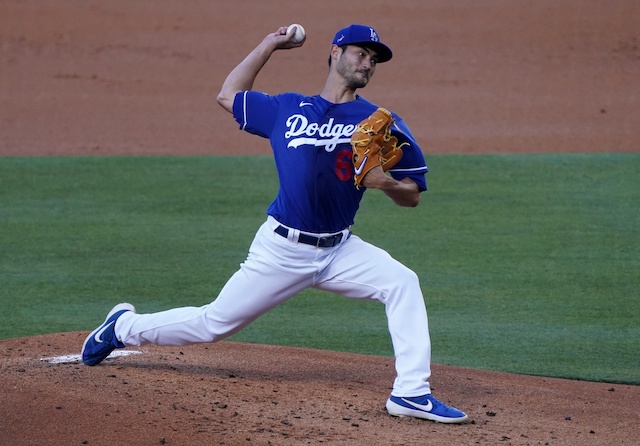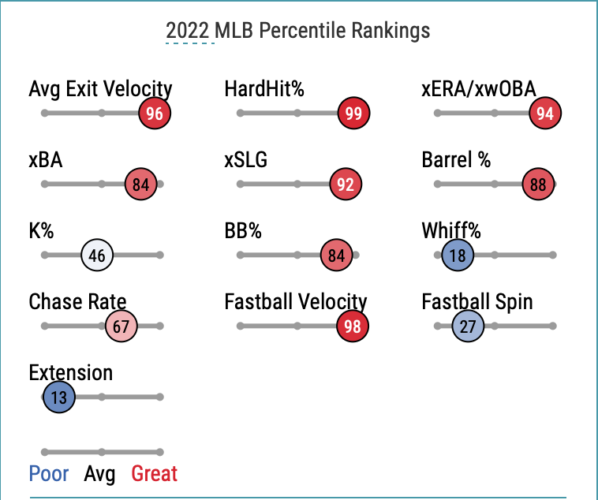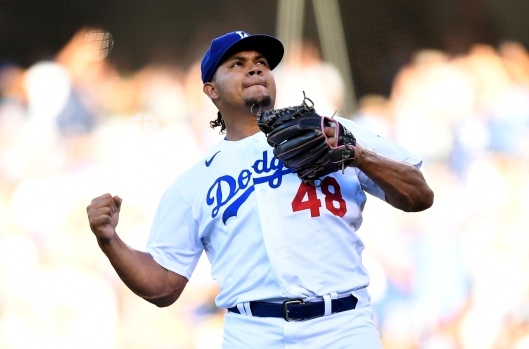The Bazooka, The Buffalo, whatever you want to call him, Brusdar Graterol has been a high impact arm in an elite Dodger bullpen since he made his debut in 2020. Best known for his electric fastball, Graterol has pitched many big innings for the Dodgers over the last three seasons. Currently, Graterol has found himself on the IL with right elbow inflation, a place he has become increasingly familiar with. This is the third time since July that Brusdar has hit the IL, and it comes after a long injury history dating back to his time in the Twins farm system. If you remember, Graterol’s injury history kept him from being sent to the Red Sox in the Mookie Betts trade, which forced the Dodgers to send Kenta Maeda to the Twins to complete the trade.
Speaking of remembering, Graterol began his professional career as a starting pitcher. He was signed in 2016 to the Twins’ Dominican League team, but had to undergo Tommy John surgery after only four starts. Then in 2019, he had a shoulder injury that caused him to miss the majority of the Double-A season. Since then, Graterol has transitioned into a bullpen arm and has avoided any major injuries, although he has missed quite a bit of time with minor arm issues.
So why do these arm problems keep popping up? It would be easy to write this off as a pitcher being fragile or the Dodgers taking precautions with their players before it turns into something major. However, I see things much differently. I see the nagging arm problems as a reason to make an adjustment.
——
One thing that stands out about Brusdar is the stride with which he throws his pitches, which can make it look like he’s playing light catch in the backyard … until the ball comes out of his hand at 100 mph. As impressive as this is, his small stride is likely putting a lot of strain on his arm.
Graterol consistently ranks near the bottom in Statcast’s extension metric (currently sitting in the 13th percentile). The extension metric measures how much ground a pitcher gains before he releases the ball to home plate, and a low extension measurement means that a player is not releasing the ball very far from the rubber. This can be caused by an early release point or a small stride, but one look at Graterol and it is evident that the latter is to blame. Here is a comparison of Graterol to former Dodger Mitch White, who only ranks in the 50th percentile in extension:


Graterol has a visibly shorter stride than that of a pitcher who is only league average. Yet, Brusdar is still able to produce elite velocity and movement, a true testament to the unbelievable arm talent that he possesses. However, this could be part of the reason why he is suffering from chronic arm ailments. The action of throwing a baseball is not a natural movement, and in order to produce a 100-mph fastball, a pitcher has to generate an extreme amount of torque. Graterol relies a lot on his upper body to produce this torque, which puts a great deal of stress on the weakest part of the mechanism. If he were to get down into his legs and create a longer stride, it would force him to use more of his lower body to generate his power, and it could take a lot of strain off of his elbow and shoulder.
Additionally, lengthening the stride may prove to be beneficial not only from a health standpoint, but from a performance standpoint as well. Graterol has already proven to be a reliable relief pitcher, but there Is certainly room for improvement with the stuff he possesses. Here is where Brusdar ranks in Statcast’s advanced metrics:

The chart shows a pitcher who is elite at preventing hard contact, but one that does not miss bats or strike people out at a rate consistent with someone that throws over 100 mph. For a major league hitter, being able to see the ball longer can make all the difference in the world, and Graterol’s short stride is actually giving hitters more time to read what pitch is coming and giving them a much better chance for contact. This is likely the culprit for Graterol’s lack of missed bats and strikeouts, which prevent him from ascending to baseball’s group of elite relievers.
——
While this may be something to watch for in the future, a major mechanical change is not eminent for Brusdar Graterol. Trying to return from an injury and get ready for playoff baseball is not the time to be performing a mechanical overhaul. There is also no evidence that the Dodgers see this as a problem and may choose to let Brusdar continue using these same mechanics since the results have been good so far. However, this could be an adjustment that pitching coach Mark Prior may want to look into if the arm problems continue to plague the young Dodger reliever, and it’s something they could work on as soon as this upcoming offseason. If Brusdar is open to it, this change could potentially help to improve his health and effectiveness, which could vault him into the elite reliever conversation.
 Dodgers Digest Los Angeles Dodgers Baseball Blog
Dodgers Digest Los Angeles Dodgers Baseball Blog
